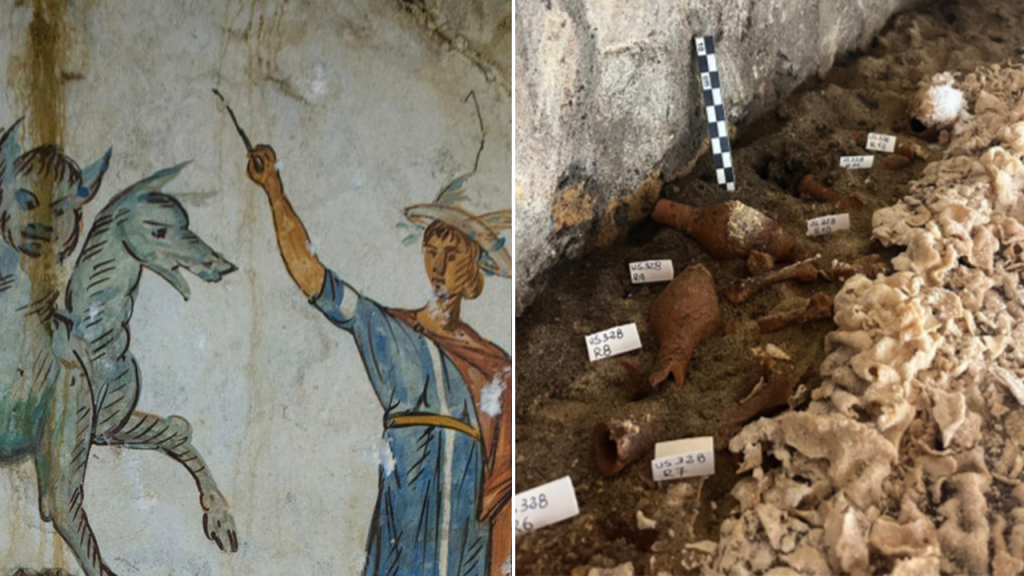Archaeologists were conducting an investigation inside the Tomba del Cerbero in Giugliano, Italy, when they were surprised to discover that it was possible to physically open the unsealed 2,000-year-old stone coffin, known as a sarcophagus. This was the first time the contents of the tomb had been seen with human eyes since its discovery near Naples the previous year. Inside, they found a mummy in excellent state of conservation, lying face-up and covered by a shroud that had been mineralized due to the climatic conditions of the burial chamber.
The discovery of the mummy in the Tomb of Cerberus continues to provide valuable information on the Phlegraean territory near Liternum, expanding knowledge of the past and offering opportunities for multidisciplinary research. Experts believe that the person in the sarcophagus may be the founder of the family for which the mausoleum was built, as the remains were surrounded by various ointments and a small metal tool used in Ancient Greece and Rome for cleaning the body before bathing. Laboratory analysis conducted on samples taken at the inhumates and depositional beds have provided significant data about the treatment of the deceased body and the funerary rituals that were put in place.
The discovery of the well-preserved mummy in the Tomb of Cerberus has opened up new opportunities for research in the area, and the investigations are set to continue with the support of archaeologists, technicians, chemists, and anthropologists funded by the Ministry of Culture. The tomb is located in the Phlegraean Fields, a large caldera volcano west of Naples, Italy. Archaeologists are hoping to uncover more information about the person buried inside the tomb and gain a better understanding of the historical context in which the sarcophagus was sealed.
The mummy found in the Tomb of Cerberus provides a unique glimpse into the burial practices of the ancient Romans and Greeks, as well as the treatment of the deceased’s body. The discovery of the well-preserved remains has sparked excitement among archaeologists and historians, who are eager to learn more about the individual buried in the sarcophagus and the family for whom the mausoleum was built. The Tomb of Cerberus continues to reveal valuable information about the past, shedding light on the customs and rituals of ancient civilizations.
The mummy discovered in the Tomb of Cerberus is believed to be the founder of the family for whom the mausoleum was constructed, based on the artifacts found surrounding the remains. The presence of various ointments and a small metal tool used for cleaning the body before bathing suggests that the deceased was treated with care and respect. The mummy’s state of preservation has amazed experts and researchers, who are eager to conduct further analyses and investigations to learn more about the individual and the historical context in which they lived.
The discovery of the mummy in excellent state of conservation inside the Tomb of Cerberus represents a significant archaeological find and offers new insights into ancient burial practices. The investigations and sampling activities being conducted by archaeologists, technicians, chemists, and anthropologists will likely provide more information about the person buried in the sarcophagus and the customs of the time. The discovery of the mummy has sparked interest in the scientific community and promises to shed light on the Phlegraean territory near Liternum, expanding our understanding of the past and offering new avenues for research.


